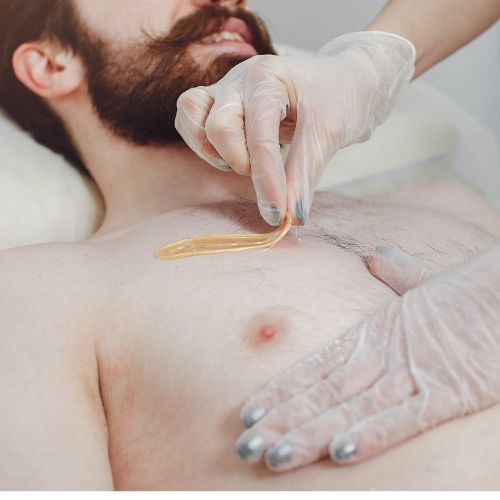Whether you’re a first-timer or a seasoned pro, getting the perfect waxing results can feel like an art form. Wax hair removal in Macomb Township is one of the most efficient ways to remove unwanted hair, but achieving a smooth and flawless finish requires a bit of preparation, technique, and aftercare. In this guide, we’ll explore ten expert tips that will not only enhance your waxing results but also make the entire experience more comfortable and long-lasting.
Preparing Your Skin for Waxing
Before you even think about applying wax, proper preparation is key to a smooth waxing experience. The right preparation ensures that the hair removal process is less painful and more effective. Let’s look at how to get your skin ready for the big day.
Exfoliate Before Waxing
One of the most important steps to achieving great results is to exfoliate your skin 24-48 hours before waxing. By doing so, you’ll remove dead skin cells, which can trap hair and cause ingrown hairs. A gentle scrub or exfoliating glove will do the trick, leaving your skin clean and prepped for wax to stick to the hair, not the skin.
Ensure Your Hair Is the Right Length
For the best waxing results, hair needs to be at least 1/4 inch long. Too short, and the wax won’t grip; too long, and the hair might break off instead of being pulled out from the root. If your hair is too long, trim it down to the appropriate length before your appointment.
Choosing the Right Wax
Not all waxes are created equal, and the choice you make can significantly impact the quality of your results. Here’s how to ensure you’re using the right product.
Know Your Wax Type
There are two main types of wax: soft wax and hard wax. Soft wax is used with strips and is best for larger areas like legs and arms. Hard wax, on the other hand, is applied directly to the skin and allowed to cool before being peeled off, making it ideal for more sensitive areas like the bikini line or face. Choose the type that matches your skin’s needs and the area being waxed.
Opt for High-Quality Products
Investing in high-quality wax can make a world of difference. Cheap waxes may not adhere as well to the hair, making the process less effective and more painful. Look for products that are specifically formulated for sensitive skin or that contain soothing ingredients like aloe vera to minimize irritation.
Techniques for a Painless Waxing Session
Waxing can be uncomfortable, but it doesn’t have to be unbearable. With the right techniques, you can minimize pain and achieve smooth results. Here are a few tips to help you get through it painlessly.
Warm, Not Hot Wax
If you’re doing an at-home waxing session, always make sure the wax is warm but not too hot. Hot wax can burn the skin and cause severe irritation. Test the wax temperature on the inside of your wrist before applying it to more sensitive areas.
Tighten the Skin for Better Results
When applying the wax, pull the skin taut in the direction opposite the wax strip. This will minimize pain and ensure that the hair is pulled from the root rather than breaking off midway, which can lead to ingrown hairs.
Post-Waxing Care for Long-Lasting Results
Once your waxing session is over, the way you care for your skin can influence how long the results last and how smooth your skin feels. Aftercare is crucial to preventing irritation and ensuring you get the most out of your waxing experience.
Avoid Heat After Waxing
Your skin is more sensitive immediately after waxing, so it’s important to avoid heat. This means no hot showers, saunas, or sunbathing for at least 24 hours. Heat can irritate freshly waxed skin, leading to redness, bumps, or even burns.
Moisturize, But Gently
Hydrating your skin is essential to keeping it soft and smooth, but avoid using heavy creams or lotions immediately after waxing. Instead, opt for a gentle, fragrance-free moisturizer to soothe the skin. Aloe vera or tea tree oil-based products are excellent choices to reduce inflammation and prevent breakouts.
Managing Common Waxing Side Effects
Sometimes, despite all the preparation, you may experience some mild side effects after waxing. Here’s how to handle the most common issues.
Dealing with Redness and Bumps
It’s not uncommon to see redness or bumps right after waxing, but they should fade within a few hours. Applying a cold compress or an anti-inflammatory cream can help soothe the skin. Make sure to avoid touching the waxed area excessively, as this can introduce bacteria and lead to infections.
Preventing and Treating Ingrown Hairs
Ingrown hairs are a common issue post-waxing. They occur when hair grows back into the skin instead of out. To prevent this, exfoliate the waxed area gently 2-3 times a week, and use an ingrown hair serum if necessary. If you notice an ingrown hair, resist the urge to pick at it, as this can lead to infection and scarring.
Scheduling Your Waxing Sessions
Timing is everything when it comes to maintaining smooth skin and ensuring the most effective waxing results. Understanding how to time your sessions is crucial for consistent results.
How Often Should You Wax?
The general rule of thumb is to wax every 3-6 weeks, depending on how fast your hair grows back. Regular waxing will weaken the hair follicle, making the hair come in finer and thinner over time, which means less pain and better results in the long run.
Timing Around Your Menstrual Cycle
Your pain tolerance can be lower in the days leading up to your period due to hormonal changes. If you can, try to schedule your waxing session for a time when you’re less likely to be sensitive—mid-cycle is usually a good bet.
At-Home Waxing vs. Professional Waxing
You may wonder whether it’s better to wax at home or leave it to the professionals. While both have their pros and cons, here’s a guide to help you make an informed decision.
Benefits of Professional Waxing
A professional esthetician can offer precision and expertise, especially when it comes to hard-to-reach areas like the bikini line or underarms. They also use professional-grade products and have the experience to ensure the process is as quick and painless as possible.
Is At-Home Waxing Right for You?
At-home waxing kits can save you money and be convenient if you’re short on time. However, be prepared to invest in good-quality products and practice your technique to avoid irritation or missed spots. Start with smaller areas like your arms or legs before moving on to more sensitive zones.
Waxing Tips for Different Skin Types
Everyone’s skin reacts differently to waxing. Whether your skin is sensitive, dry, or oily, these tips will help you tailor the experience to your skin’s needs.
Sensitive Skin
If you have sensitive skin, hard wax is generally a better option than soft wax, as it’s gentler on the skin. You can also look for waxes that are hypoallergenic and free from artificial fragrances or dyes to reduce irritation.
Dry Skin
Dry skin can cause the wax to adhere to the skin rather than just the hair. Make sure to moisturize well in the days leading up to your session, but avoid moisturizing on the day of your wax, as it can make the wax less effective.
Maintaining Smooth Skin Between Waxing Sessions
You’ve got your waxing routine down, but how do you keep your skin smooth between appointments? Here are some maintenance tips to help prolong your waxing results.
Keep Up a Consistent Exfoliation Routine
Exfoliating your skin once or twice a week will help prevent ingrown hairs and keep your skin soft. Be sure to use a gentle scrub, especially in sensitive areas, and follow up with a lightweight moisturizer.
Avoid Shaving Between Sessions
It can be tempting to shave when you see some regrowth, but resist the urge! Shaving will disrupt the waxing cycle and cause the hair to grow back thicker. Stick to waxing for consistent, long-term results.


